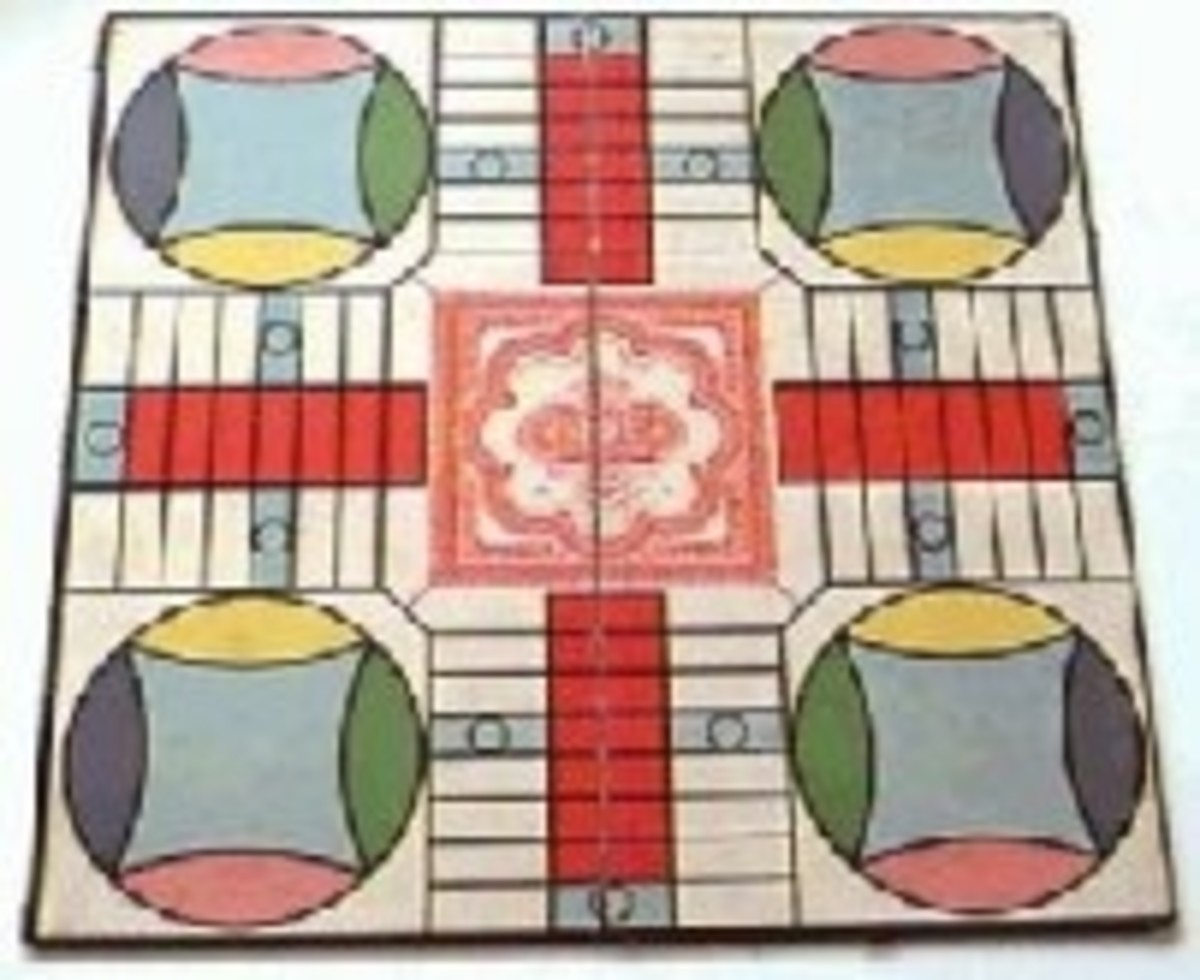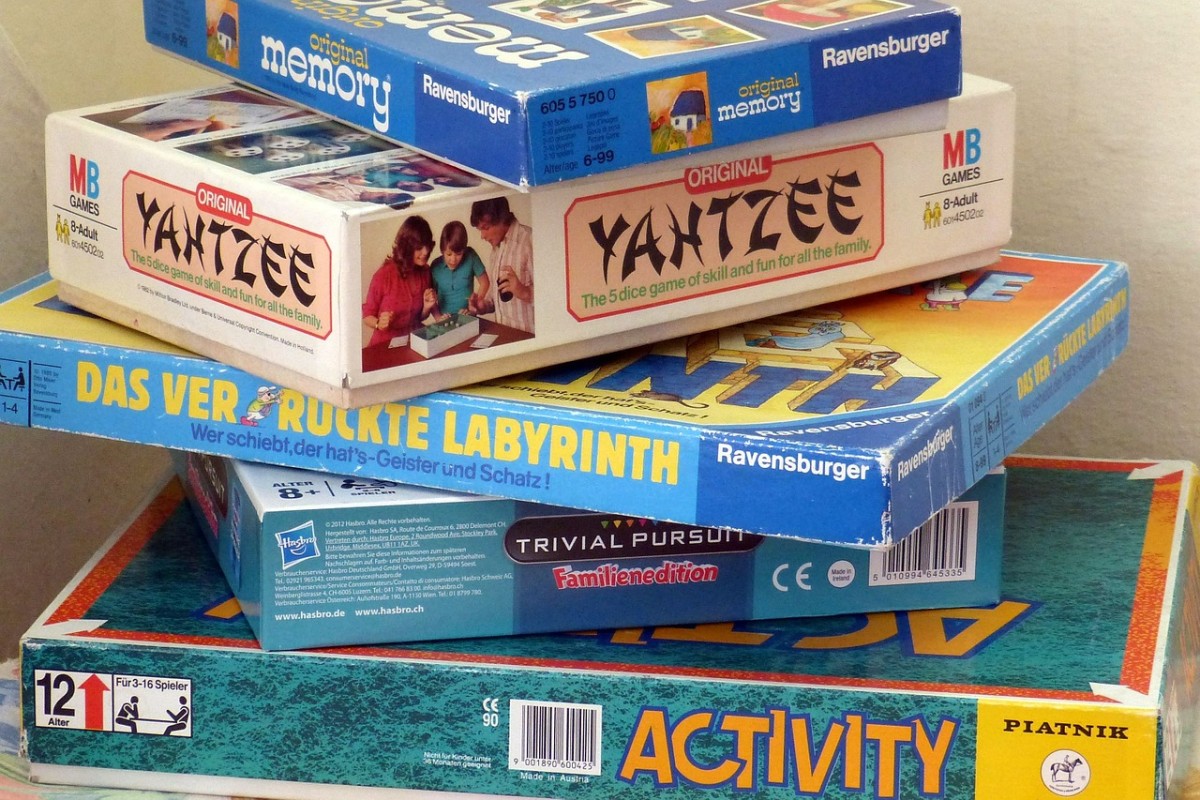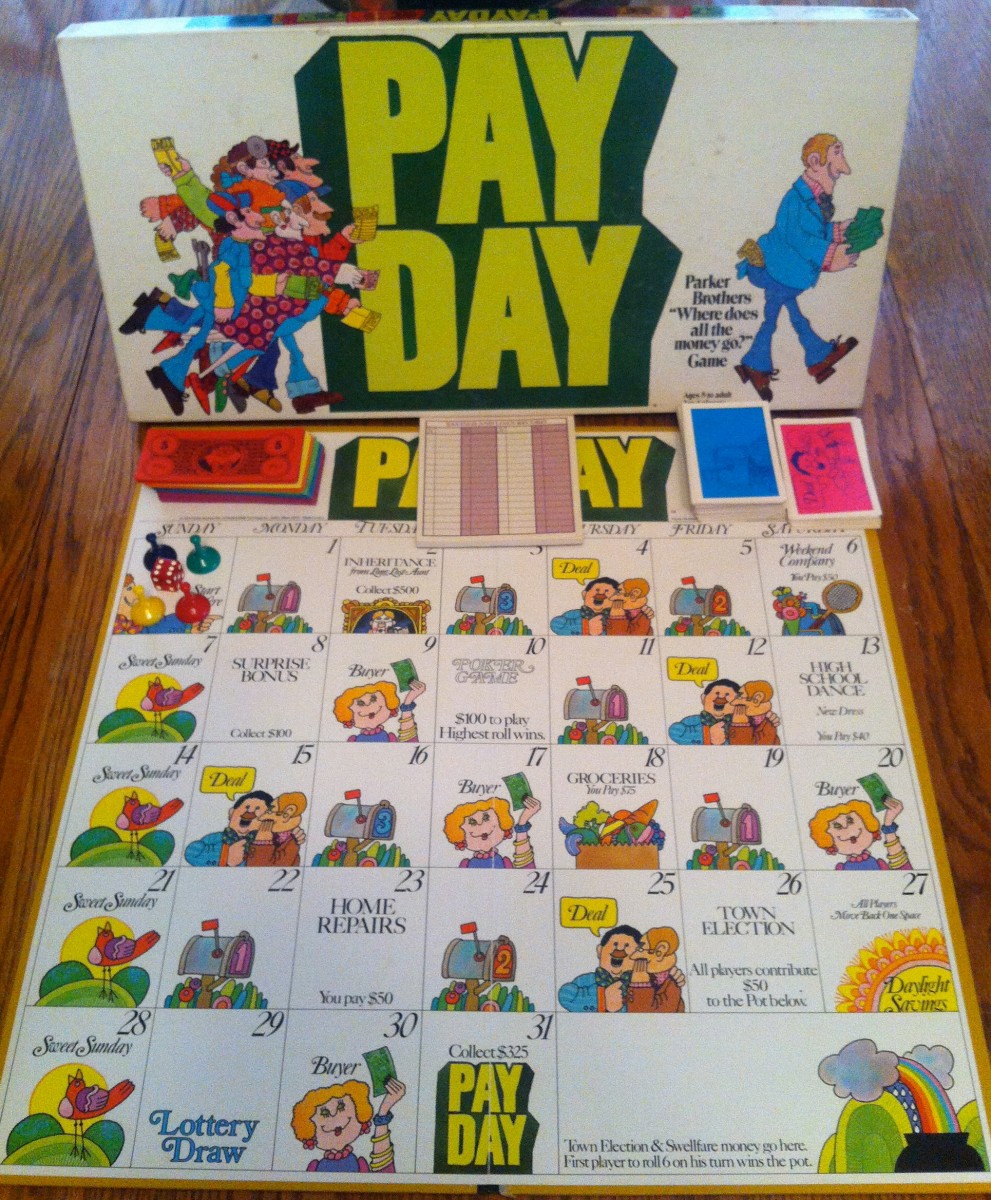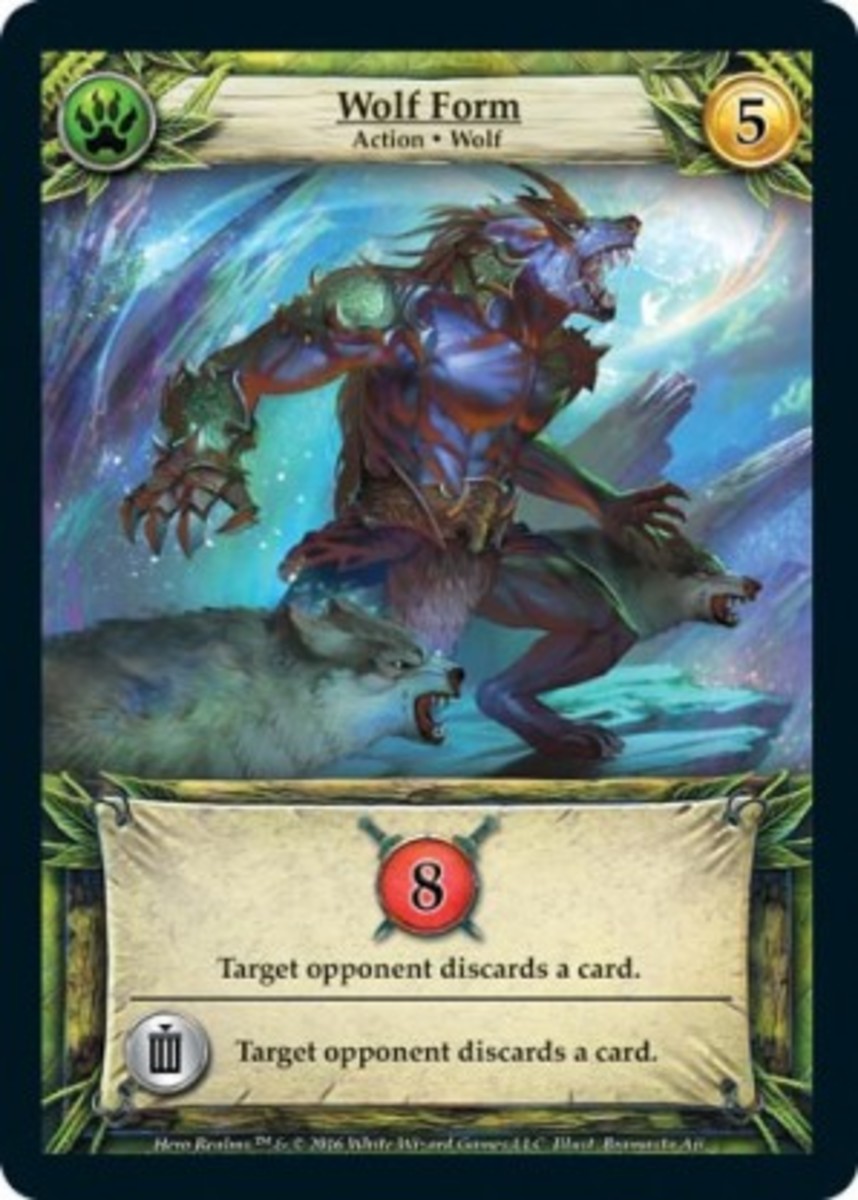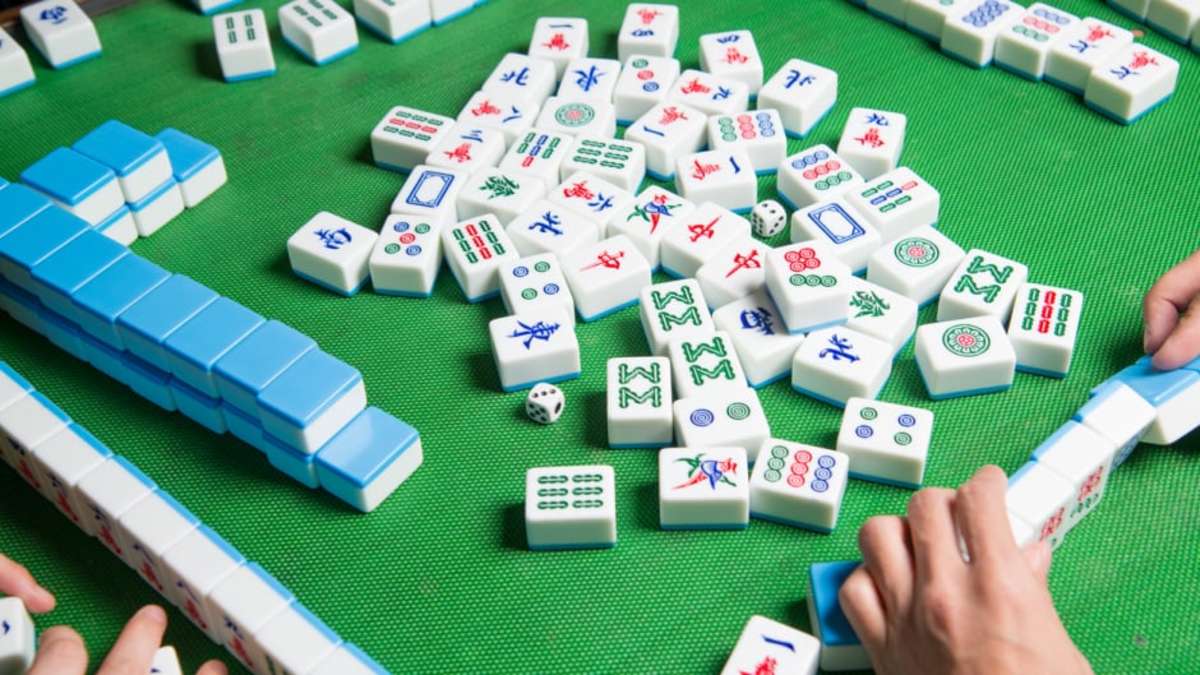Game Design Workshop: Spaceship Race
The game workshops are meant to be a jumping-off point for your own creativity, not a cohesive detailed process from start to finish. I’ll establish the general ideas for the game, including the main mechanics and issues involved, and leave the details to you to fill in. After all, it’s your game, it should be the way you want.
So grab your kids, or your parents, or some friends, or some random strangers, grab the suggested materials below, and get designing! I promise it’ll be fun.
Suggested Materials
- Paper and cardboard (lots of it - this is for the board, cards, and maybe even markers and counters)
- Writing implements (pens, pencils, crayons, markers, etc)
- Foam (sheets of foam are good for backing a board to make it sturdier, and geometric foam shapes make nice markers and tokens)
- Playing Pieces (this can be anything you want - corks, pawns from another game, various toys, maybe even homemade out of clay)
- Dice (as many as you need)
- Scissors and other cutting implements (do not use sharp cutting implements without adult supervision)
Planning
With this being our first workshop, I thought we’d start simple and put together that spaceship race game I described in Board Game Design: Conceptual Thinking. You can call it whatever you want, but I’m going to call it simply Spaceship Race. This is going to be a simple start-to-finish race game with a few kinks thrown in to make things exciting. Before we start building the game, though, let’s talk a little about what we want it to be.
Goal
Well, this is obvious. The first player to get to the finish line wins. You can’t get more straightforward than that.
Interaction
A race is naturally a competition, so there’s that. But how much interaction do we want the players to have? Mostly, they’ll be zooming along and not really doing things to each other (that much). But what fun is a spaceship game if the players can’t shoot at each other, right? To keep the race moving, we should focus on indirect competition and let the board and any cards affect the players for the most part. But we’ll put in a feature or two that will let the players directly affect each other.
Focus
We’ll keep this one simple, too. A race is all about speed, so we want to think about movement. The players want to get from the start to the finish as quickly as possible, so the focus of our rules is on helping or hindering the players’ movement. If it doesn’t really impact movement in any way, we should probably keep it out of the game or the players might start feeling aimless and stop having fun. We want to keep them, and the game, moving.
Theme
Spaceship race!! Vroom vroom!! Pew pew!!
Building
I consider all of the rules-making part of the building phase. Sometimes rules will be discovered as you physically make a part of the game, and sometimes rules will inspire you to make something for the game, so I lump it all in as the building portion of designing the game, because either way - with things or words - we’re putting together the nuts and bolts of the game.
Before we get into it, let’s narrow our focus just a little more. Keeping your focus as specific as you can will help you better tackle any design questions that come up and keep the game streamlined as you go, making the refining phase a bit easier. We said that our concept focus is on movement, but there are many ways to affect movement. If we use our theme to guide us, there are two things that can affect the players’ movement: the ships and the course. We want to concentrate our design on one or the other - if we add in too much stuff to both of them, we can end up with a scattered, lopsided, or otherwise dense game which could either overwhelm or possibly bore the players. Too much going on is just as bad as not enough going on. We do want to let the players shoot at each other, so we’ll give the ships some consideration later, but I think the best way to go is to concentrate on how the course will affect movement. And the course is represented by the board, so...
The Board
...the first thing we need to do is draw a board. After all, what’s a race without a racetrack? I suggest you make a board that has a long single strip of squares for movement. Keep the players moving in a straight line, and force them to “bump into” each other on the race track so we get a bit of interaction if we want it. I’m certainly not an artist, but you can check out my board as an example. I wanted a nice long race, so I made my track windy and curvy to get a lot of squares on a piece of 8x11 paper. You can use any size paper you want, and the bigger the better. Go crazy with it, use multiple sheets of paper. In fact, I’m going to do just that! There, now I’ve got two pieces of 8x11 paper for my racetrack. You don’t have to mark a start and finish square like I did. Instead you can let your players choose which direction to go along the path. But if you do let them go either way, there will be additional balance issues to consider - I’ll talk about that in the refining section.
The empty board
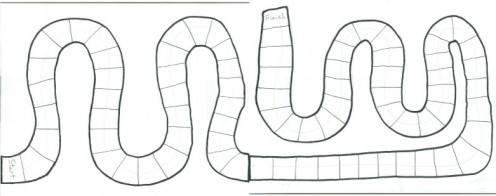
Now that we have our board, all we have to do is grab some dice and playing pieces and we have a game. Roll the dice, move that many squares, and whoever gets to the end wins. Well, I don’t know about you, but that’s not quite fun enough for me. I like a little bit of chaos when I rely solely on luck. Right now, that’s what’s happening. The game relies solely on luck, which can give you a little “anyone can win” replayability, but it might leave one or more of the players feeling frustrated. Further down, we’ll add some neat stuff to give the players a bit of control over their luck. But for a game like this, most of the features should be on the board.
Most of the games I grew up playing had special squares on the board that made you do things. Go back 2 squares. Move up 3 spaces. Miss a turn. Draw a card. Stuff like that. Let’s put some of that stuff into our game. I’ll tell you what I’m going to do, but you go ahead and add whatever you want, even “draw a card” type spaces. We’ll discuss cards when we finish with the board, but you betcha I’m going to throw in a card pile or two. We can do really fun things with cards.
The first thing I’m going to do is go through and add black holes. Instead of writing “miss a turn” a lot, I’m going to put a picture of a black hole (or since I can’t draw, a spiral that I’m pretending to be a black hole) in a few spaces. It’s more visually pleasing and easier to identify than words, especially since there will be a lot of spaces with words on them. If you use symbols, remember to put what they mean in the rules. In this case, I’d put in the rulebook (if I had a rulebook): “If you land on a space with a black hole, miss a turn.”
Now that I’ve got my black holes in, I want to add spaces for players to draw a chance card. I’ll call them “space storms” and add a little squiggly cloudy symbol that looks distinctly different from the black holes.
I’m also going to add wormhole spaces. Six of them. When you land on a wormhole space, you roll the die and move to the space with the same number. This is a pretty dangerous feature, so I have to be careful where I put the wormholes. I don’t want one too close to the finish line. I may even take this out later, but this is the part of the process where you brainstorm and go crazy. Oh wait! Here’s a better idea: if you land on a wormhole, you get to roll the die and move again. Now I can put in as many or as few as I want, since I'm not forced to put in six (or however many I can roll on the dice I'm using).
I’m going crazy, all right.
I would put in spaces that say stuff like “go back 2 squares” or “go forward one square,” but I think I have plenty of stuff on the board already. You can go ahead and do that, though, if you want. I think I’ll let the space storms do that for me.
One more note about designing the board before we move on to the cards. Since our game is focusing on the board, this is where you can really add replay value to your game. The more you can get your board to be different every game, the bigger the draw to play it “just one more time.” If you put in a lot of spaces that do the same thing every time, the players get to learn and memorize where everything is, and your board could start to seem a little stale. If, on the other hand, you use random spaces like a “draw a card” space, the players won’t know what to expect next time and might look forward to the discovery.
The finished board
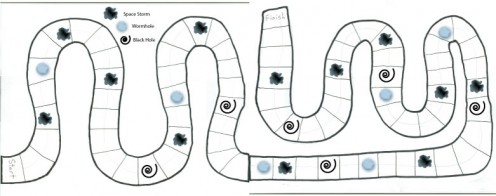
The Cards
I don’t want to get into too much detail here, since that’s not really important. I wanted to make my board have as much of a mysterious random effect on the players as I could while keeping it simple. So while the Space Storm spaces don’t change, their results certainly do. If you add your own “draw a card” spaces, you want to keep it to one deck of cards that all the spaces will pull from. Cards can get cumbersome, and they need a space to go. Not to mention you should be able to shuffle them without needing exercise first. You want to keep the number down to a manageable level, but for now you can go nuts and add in whatever you want. We can always get rid of cards later.
As for what’s actually on the cards, the only limit is your imagination. You do want to keep it simple. Don’t get so complicated that the players get confused. The majority of the cards should be just “move forward/back X number of spaces.” Throw in a few “miss a turn” cards, or maybe swap places with the closest player. Part of the reason is you don’t want your players to feel like the cards are too complicated to be worth it. Another part is that when they do draw the elaborate cards, they feel special by contrast, and are exciting. What do I mean by elaborate cards?
Remember how I said we’re using the cards to give the board a random element? Well, we can do the same thing on the cards themselves. For example:
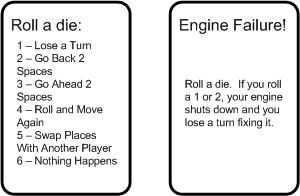
The first example card gives you a different result depending on your die roll, making the card itself different every so often. The second card also gives you a random result, but instead of several options, it’s just a yes or no. You can get very creative with these types of cards, but you shouldn’t do too many. Perhaps one third of the card deck is a good number.
What we have now is a very playable game with lots of chaos. Fun! Grab some dice, grab some friends or family, and get playing. Roll the die or dice, move that many spaces, and do whatever it says on the square, if anything.
Dice? What dice?
What? I never said anything about the dice? Shame on me. I kept talking about rolling dice, but I never mentioned the dice themselves. That part I’ll leave up to you. I’m using one six-sided die for my game, but you can use anything you want. Play around and try all different “sizes” and numbers (and combinations) of dice. Maybe you want the game to go faster, so you use two six-sided dice, or one eight-sided die. Or you can use a four-sided die and have the game go slower. Changing up the dice is an easy way to control the momentum of a game.
The Ships
One last thing before we talk about refining your game. I did say I wanted to be able to shoot the other players, but since this isn’t part of our focus, I’m going to keep it very simple so it doesn’t dilute our game. For my game, the players have the following choice:
- Roll a die, and you can either move that many spaces, shoot that many spaces, or a combination of the two. When you get shot, you lose a turn.
So let’s say I roll a six. I can move six spaces, or I can move less than six spaces, and for every space I don’t move, I can shoot. So if I move two spaces, I can shoot another four spaces and make someone lose a turn.
With that concept in mind, you can get a little more elaborate by adding weapons and other devices. Maybe you’d want to make a deck of weapon cards, where each weapon did something else instead of make your opponent lose a turn. Then you could deal one to each player to add some added quirks to your game. Again, the only real limitation is your own imagination. And if you don’t want to have the players be able to shoot each other, you don’t have to.
Refining
Since we’re doing this just for our own enjoyment, we don’t have to worry too much about this phase of designing. It’s probably something we’ll even do naturally as we put together and play the game. That’s what refining is, really: playtesting. The only way to really tell if the game’s any good is to play it. Play it with a lot of people. Play it with two people, play it with five people, play it in all sorts of different variations and configurations. That’s how you really find out what works and what doesn’t. If something doesn’t work, you can either get rid of it, or change it.
There’s not much that needs to be said here except to talk briefly about that balancing issue I alluded to earlier. When designing your board, you want to keep momentum in mind. To make your race exciting, you’ll want to let the players get off to a decent start and really get moving before you hit them with the big stuff, like missing turns. It can be very frustrating if a player gets bogged down right away and can’t catch up. By the same token, you don’t want all your players to get mired and turn the game into a snoozefest, which can happen if they keep shooting each other right away. So the answer might be to put some spaces in that can help separate the players early on so they can’t shoot each other right away. But you also want to be careful that you don’t let one player get propelled to a huge lead right away. Momentum is a tricky thing to gauge. The solution is to just play the game a lot and see what works and just do what “feels right.” If you do decide to let the players choose which direction they want to go, then you’ll have to address this balance twice, once going in one direction and once going in the other direction.
I’m not going to tell you the best way for your game to be. That’s for you to decide, and the “right answer” is the one you like the best. As long as you keep your focus in mind, you shouldn’t have a problem addressing any issues that pop up.
Go grab some stuff and get designing! And keep playing!
And please let me know what you come up with. I’d love to play your game!


